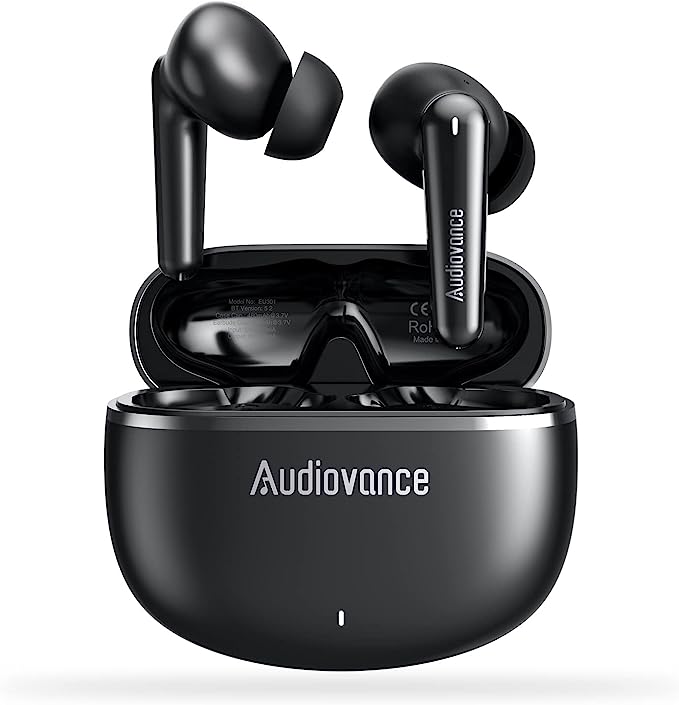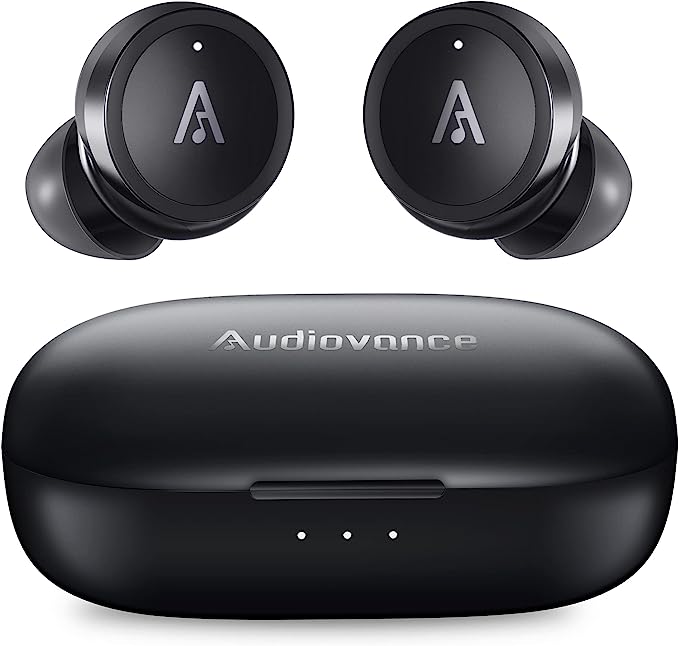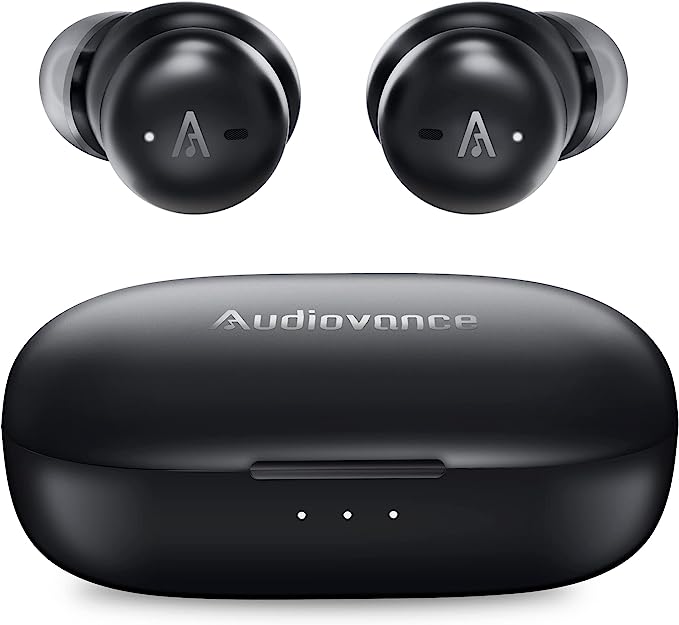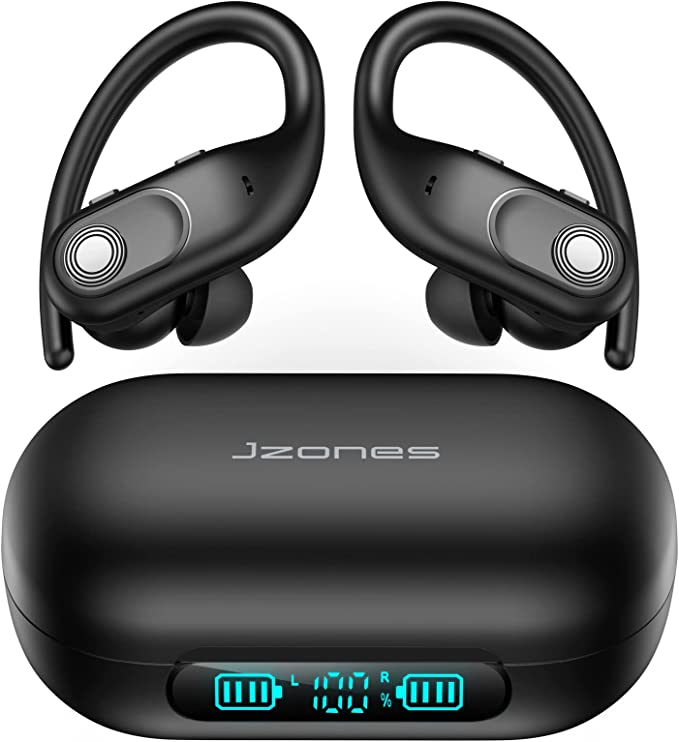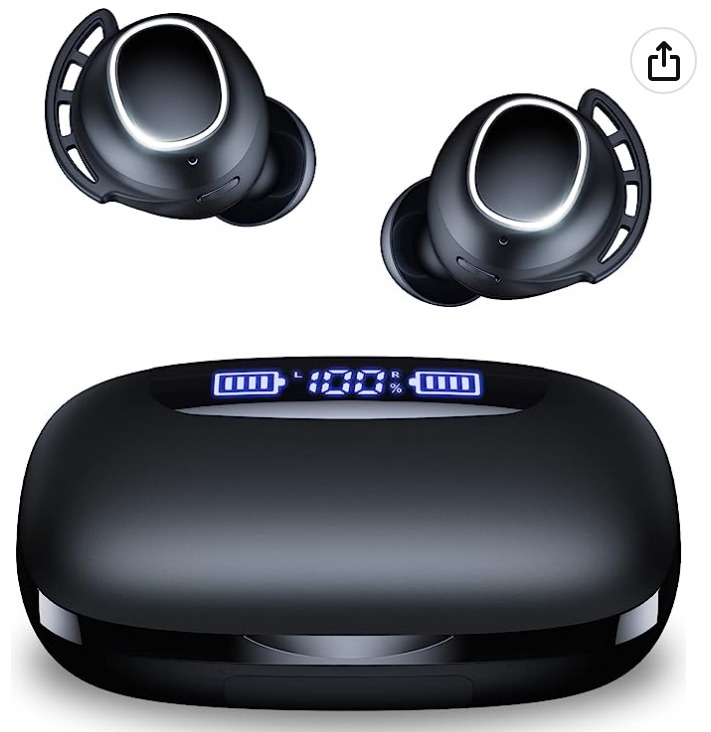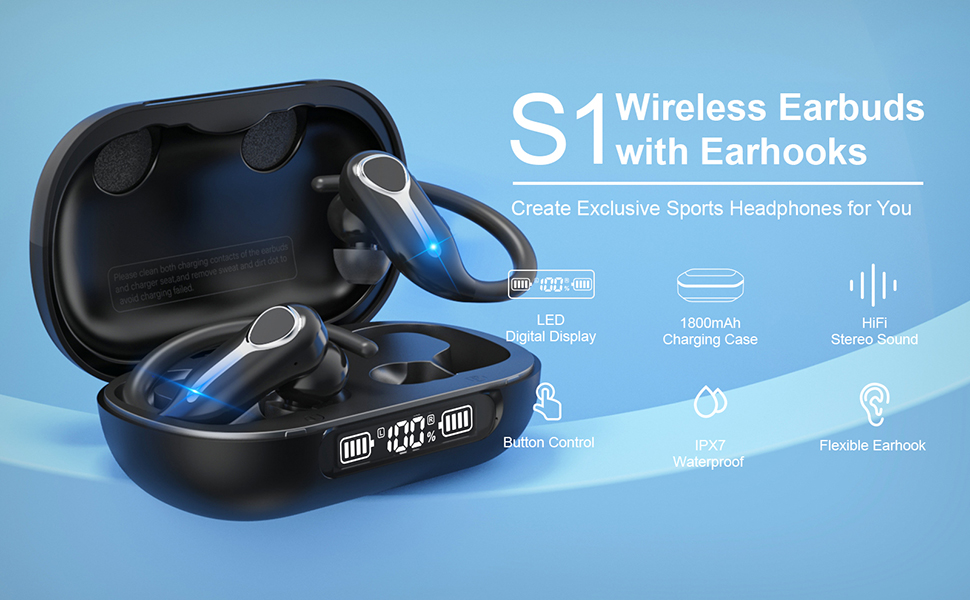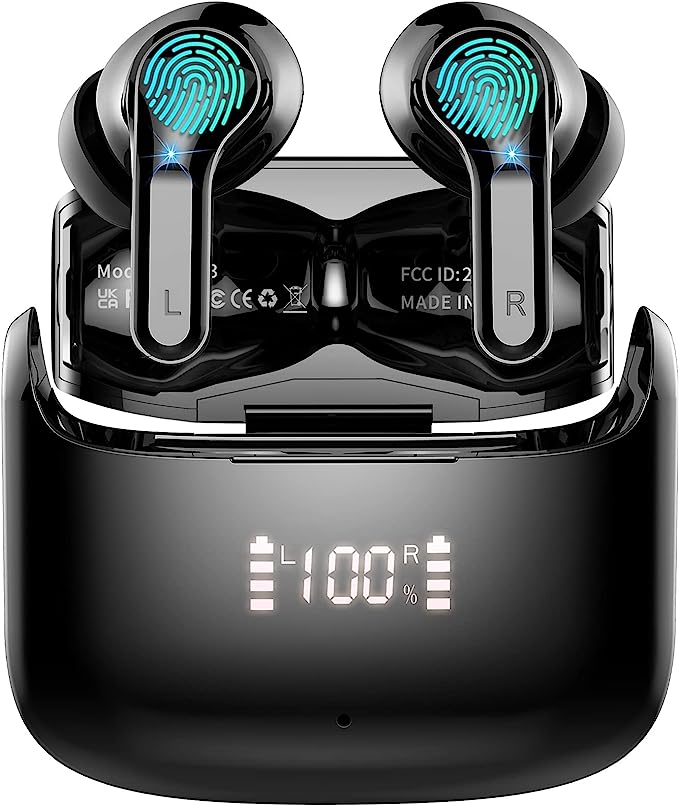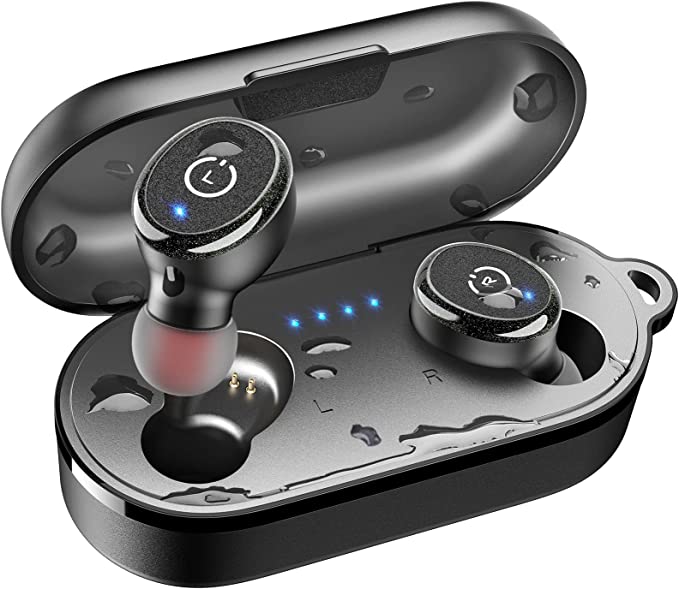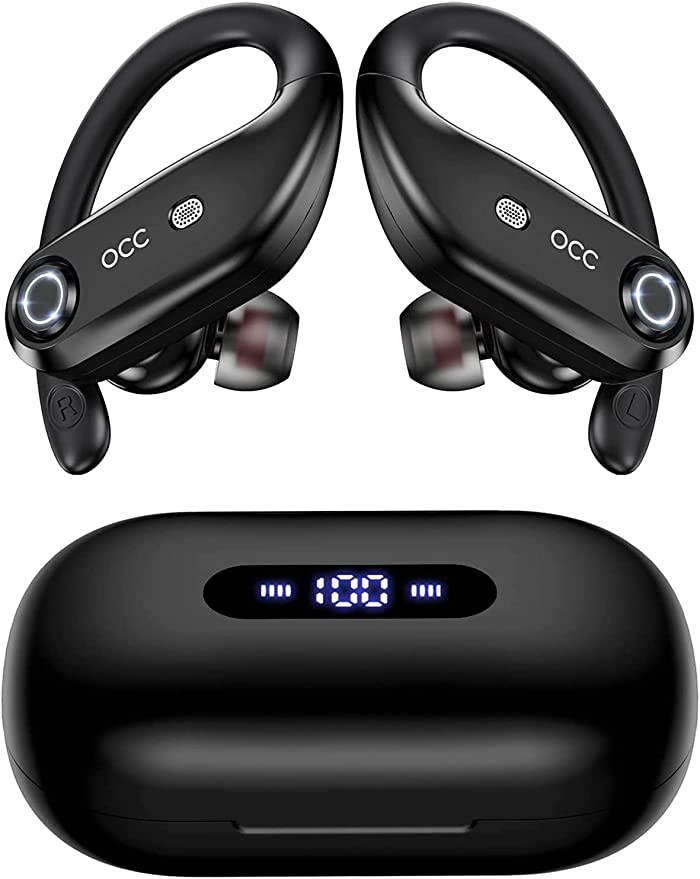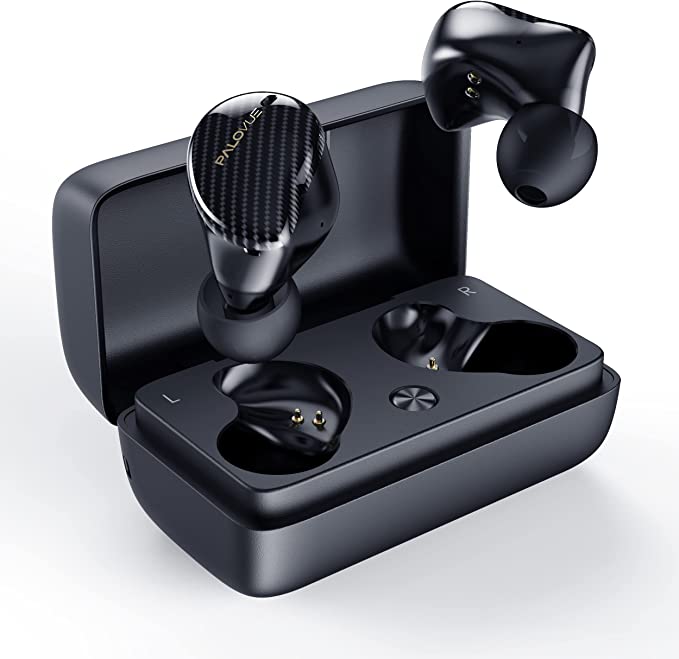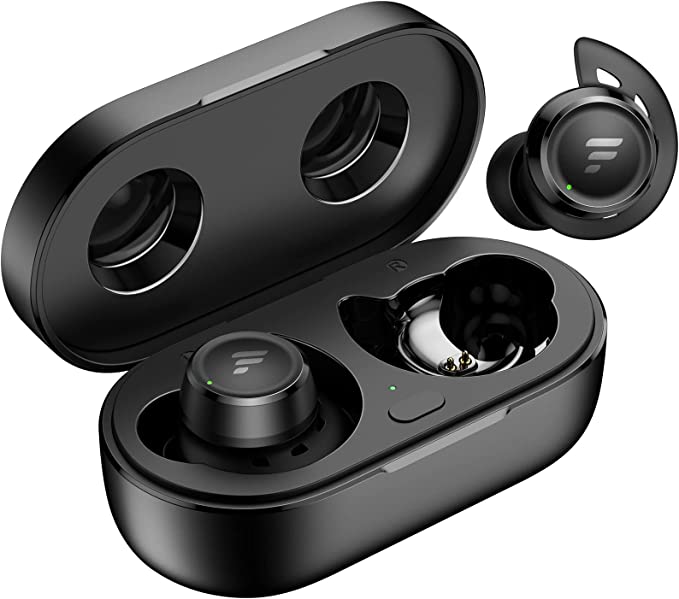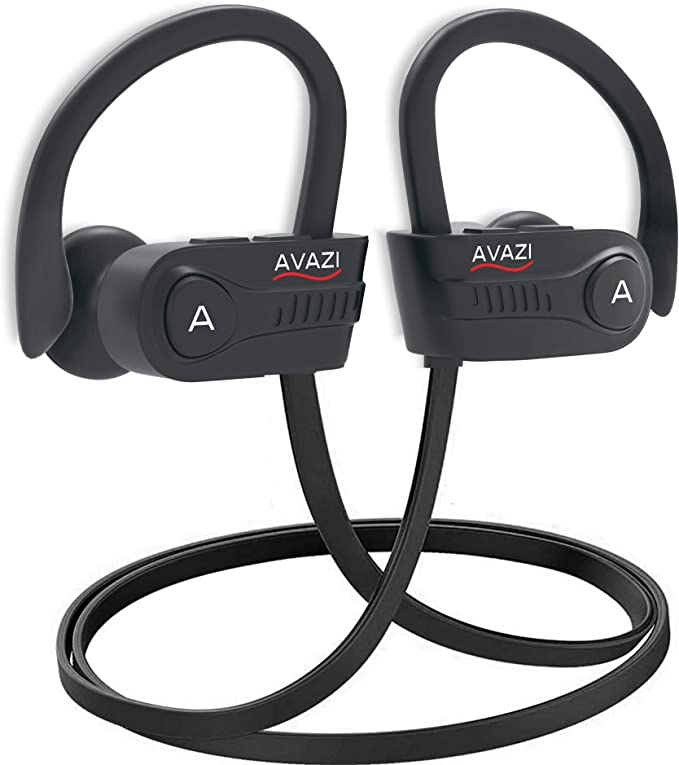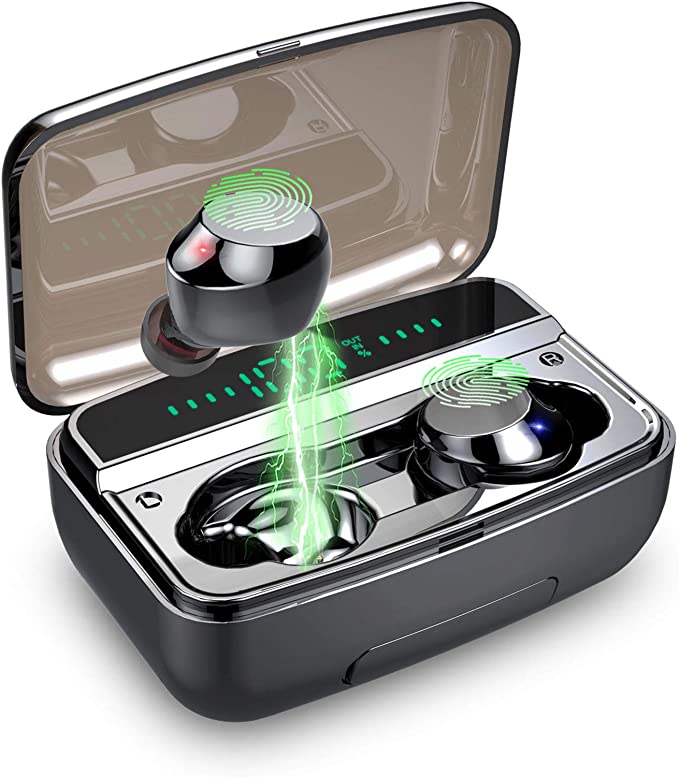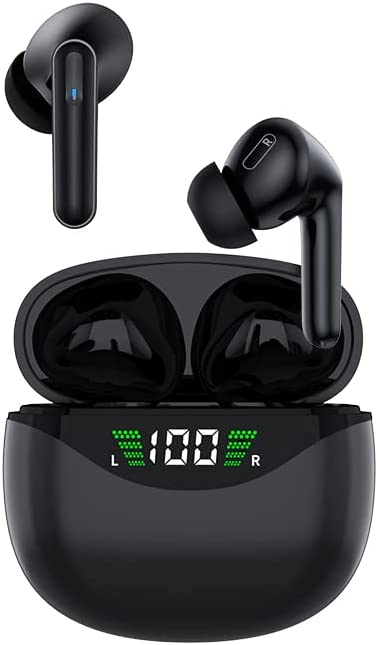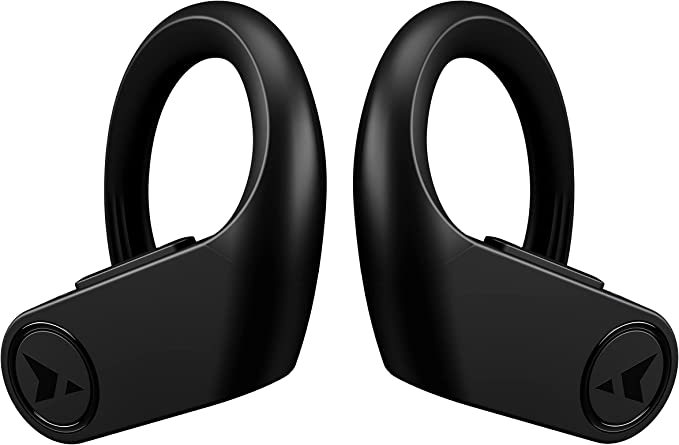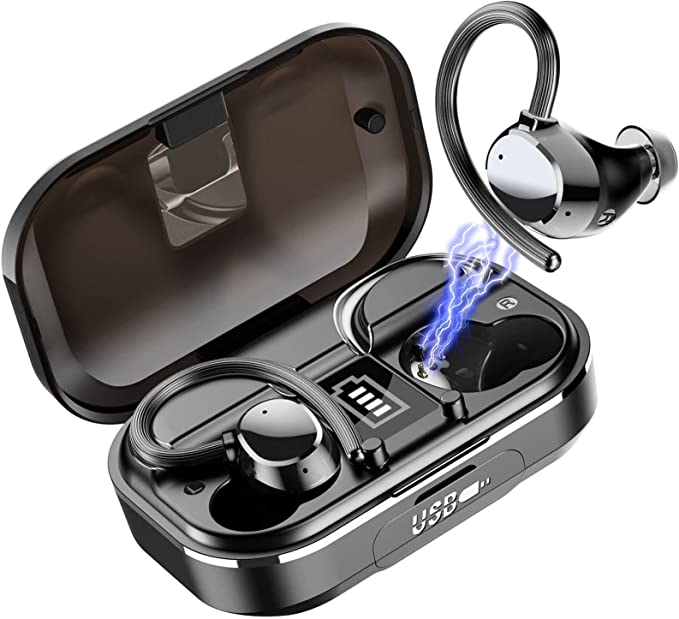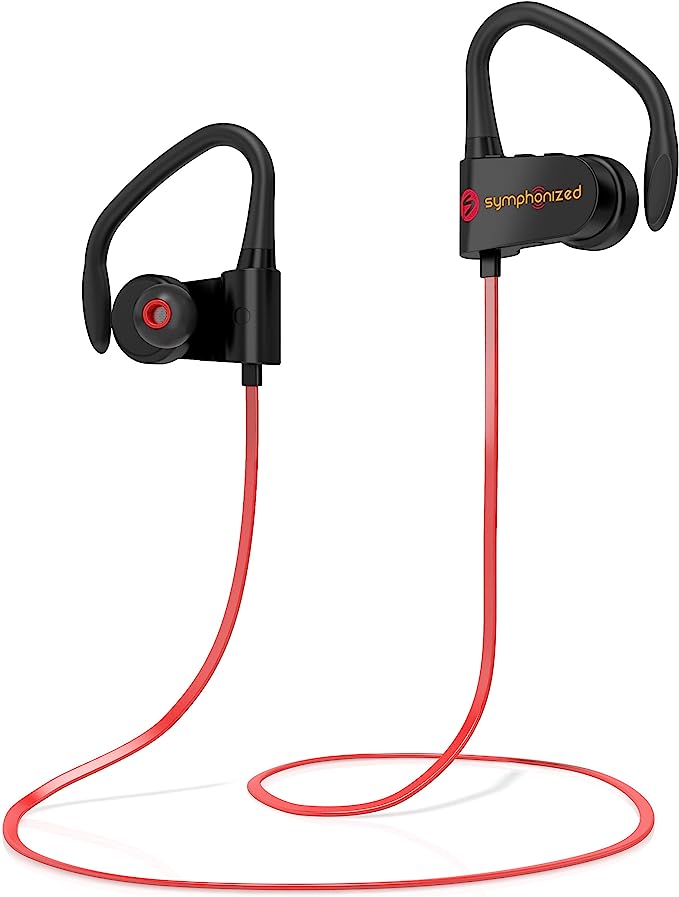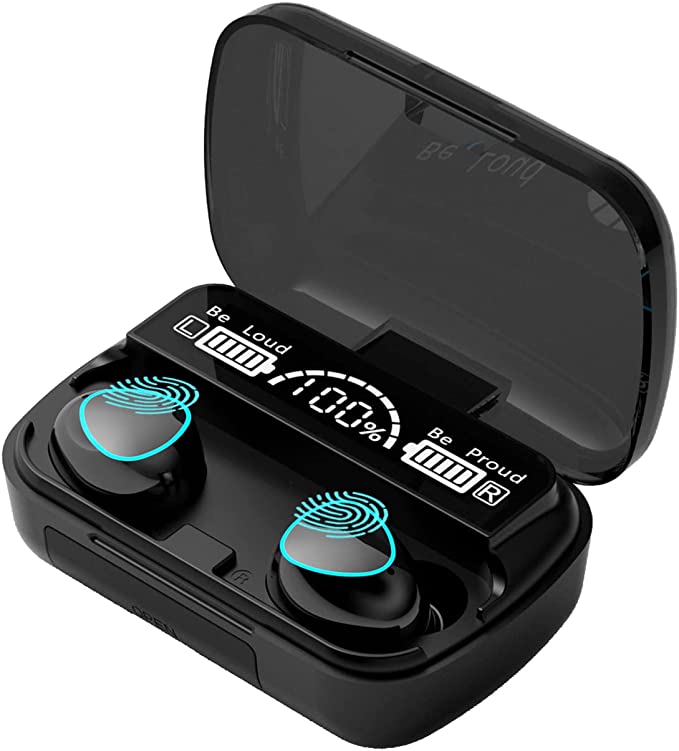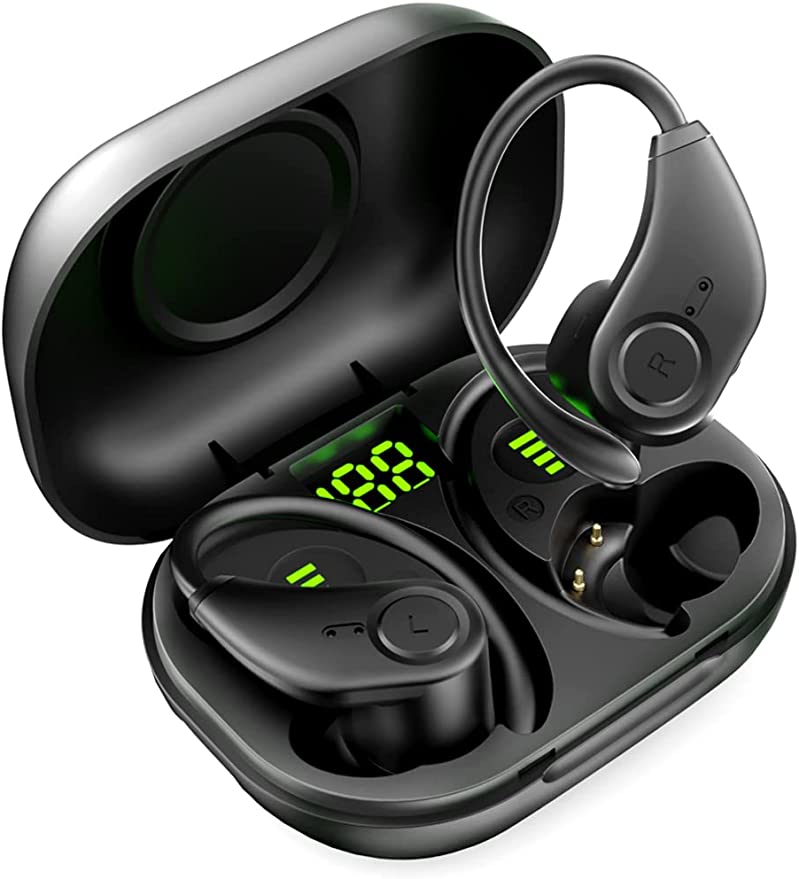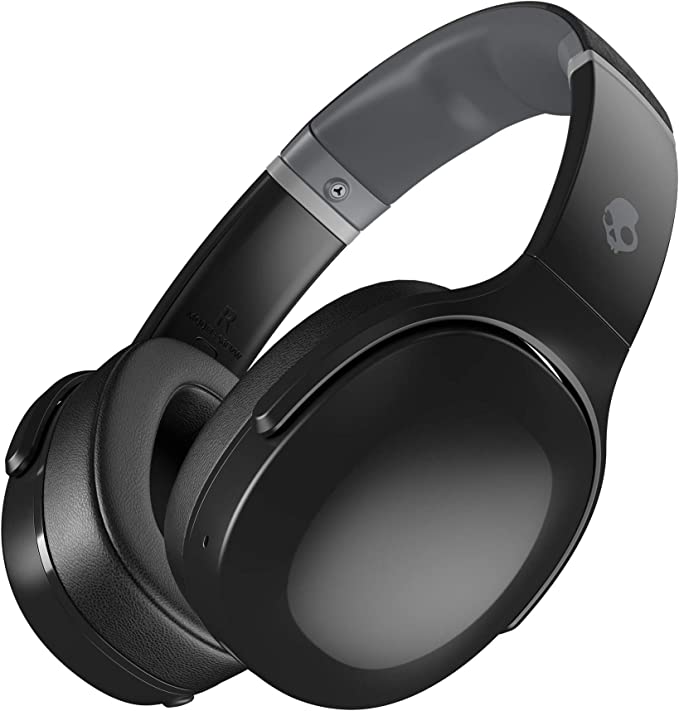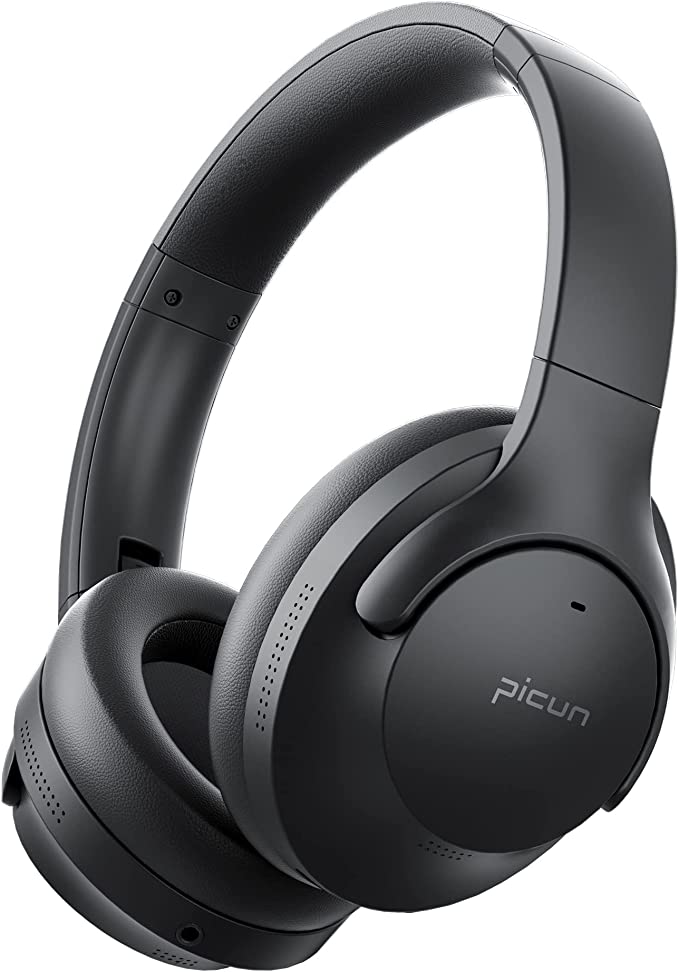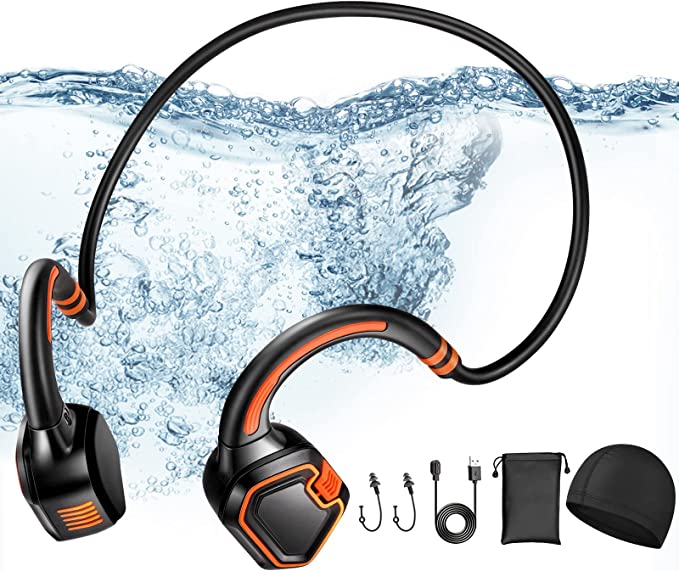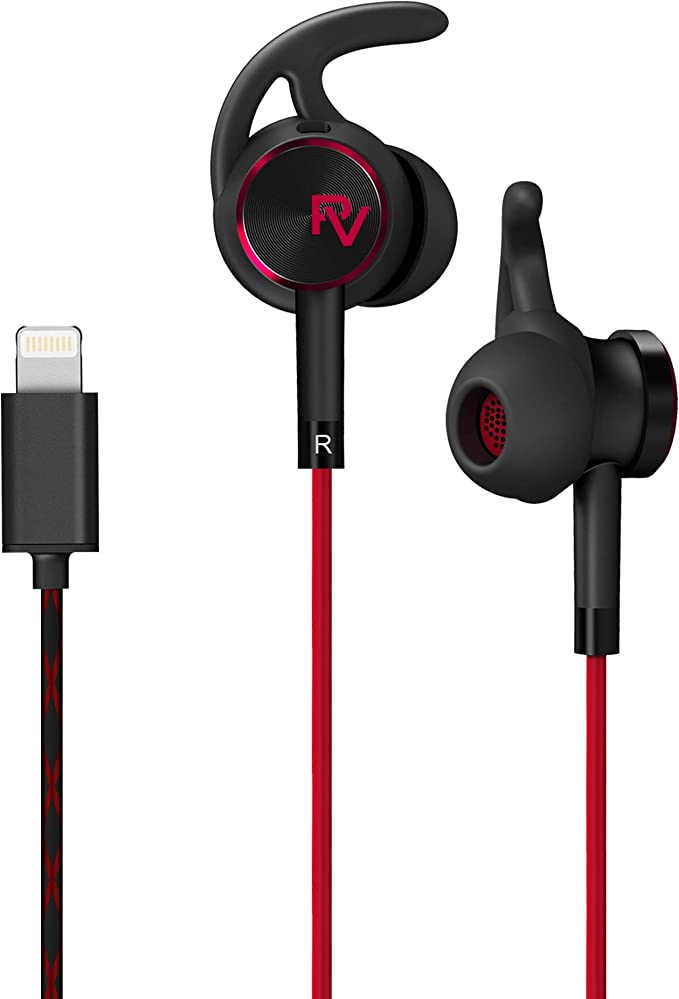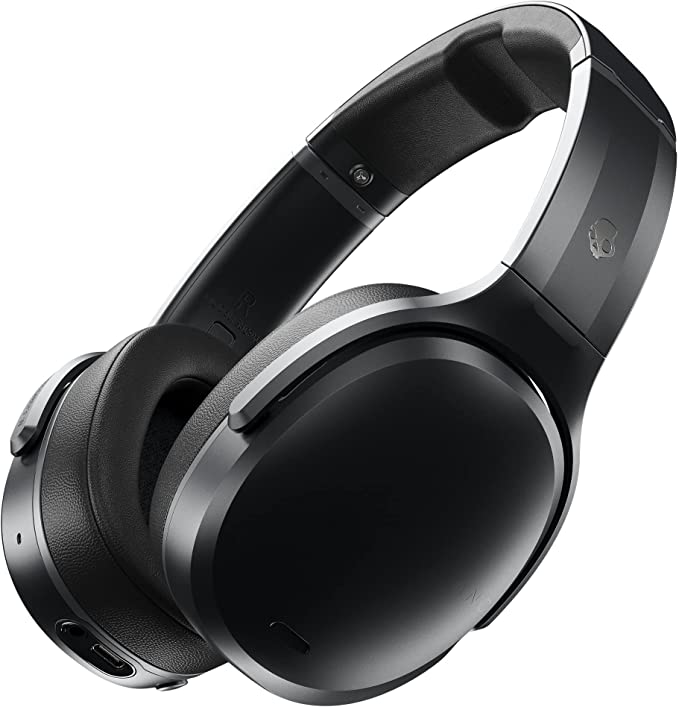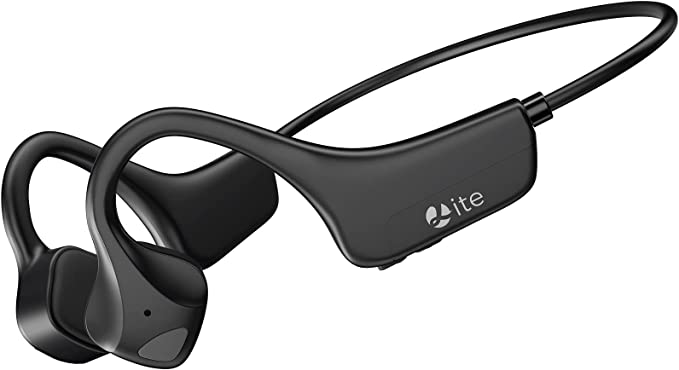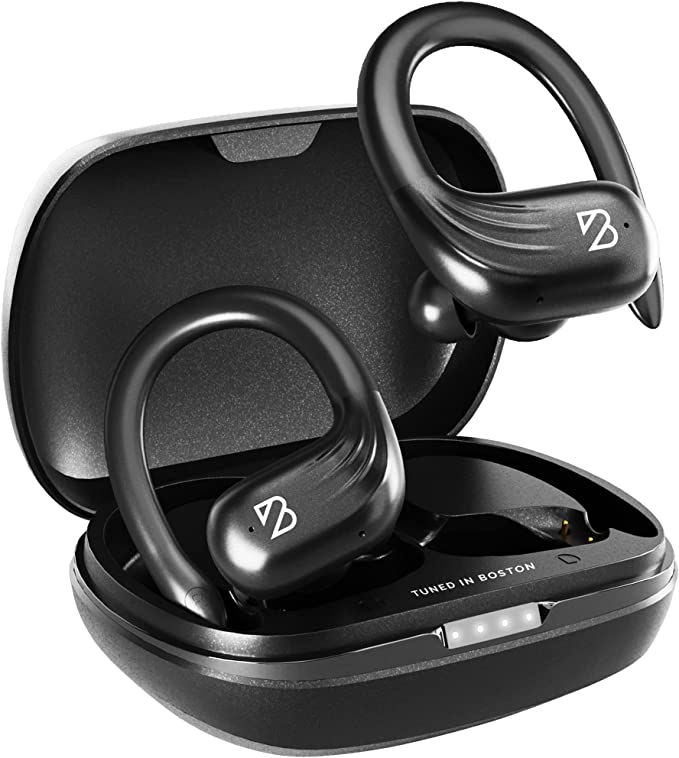Audiovance Speed 301 Wireless Earbuds: Your Perfect Workout Partner
Update on Feb. 22, 2025, 8:21 a.m.
We’ve all been there. You’re halfway through your run, feeling the rhythm of your feet hitting the pavement, the energy surging through your body… and then, pop, your earbud falls out. Or maybe you’re in the middle of a set of squats, only to be distracted by the crackling sound of a loose connection. The struggle to find workout earbuds that can keep up with an active lifestyle is real. It’s a quest for a blend of secure fit, high-quality audio, and the resilience to withstand sweat and movement. The Audiovance Speed 301 wireless earbuds aim to solve this problem. But these aren’t just another pair of headphones; they’re a showcase of how scientific principles can be applied to enhance our everyday experiences. Let’s explore the technology that makes them tick.

The Challenge of Sound and Movement:
Before diving into the specifics of the Speed 301, it’s helpful to understand why designing workout earbuds is so tricky. It’s not just about making them small and wireless. It’s about overcoming the challenges posed by the physics of sound and the biomechanics of movement.
Our ears are incredibly sensitive instruments. They detect vibrations in the air and convert them into electrical signals that our brains interpret as sound. The quality of that sound depends on many factors, including the frequency and amplitude of the vibrations, the shape of our ear canals, and even the way our heads move.
When we exercise, things get even more complicated. The movement of our bodies creates vibrations that can interfere with the sound waves traveling from the earbuds to our eardrums. This is especially true for activities like running, where each footstrike sends a shockwave through the body. This can result in what’s often called “thumping noise” or, more scientifically, bone-conducted sound.

Staying Put: The Physics of a Secure Fit
The most common complaint about workout earbuds is that they simply don’t stay in. The Speed 301 addresses this with two key design features: earhooks and specially designed eartips.
-
Earhook Design: More Than Just a Hook: The adjustable silicone earhooks aren’t just for show. They utilize the principles of leverage and force distribution. By wrapping around the outer ear (the pinna), the hook provides a stable anchor point. The force exerted by the earbud is distributed across a larger area, reducing pressure on any single point and minimizing the chance of the earbud slipping out. Think of it like a climbing anchor: a single point might fail, but multiple points of contact provide much greater security. The adjustable nature of the hooks is crucial, as ear shapes and sizes vary considerably.
-
The Not-Fully-Sealed Eartip: A Deliberate Choice: You might expect earbuds to create a complete seal within the ear canal. However, the Speed 301’s eartips are intentionally designed not to fully seal. This might seem counterintuitive, especially if you’re used to noise-isolating earbuds. But there’s a good reason. As mentioned earlier, movement during exercise creates vibrations that travel through the bones of the skull. A fully sealed eartip can trap these vibrations, amplifying the “thumping” noise. By allowing a small amount of air to pass through, the Speed 301 reduces this bone-conducted sound, providing a more natural and less distracting listening experience. The trade-off, as Audiovance notes, is a slight reduction in bass response. It’s a conscious design decision prioritizing overall comfort and sound clarity during exercise.

Bluetooth 5.2: The Wireless Revolution
Wireless earbuds are now commonplace, but the technology that makes them possible is far from simple. The Speed 301 utilizes Bluetooth 5.2, the latest iteration of this ubiquitous wireless standard. To understand its significance, let’s take a quick trip down memory lane.
-
A Brief History of Bluetooth: Bluetooth was developed in the late 1990s as a way to replace cables for short-range communication between devices. It uses radio waves in the 2.4 GHz frequency band to transmit data. Over the years, Bluetooth has evolved significantly, with each new version offering improvements in speed, range, power efficiency, and security.
-
The Advantages of 5.2: Speed, Stability, and Efficiency: Bluetooth 5.2 builds upon previous versions, offering several key advantages for audio applications. One of the most significant is increased data transfer speed. This allows for higher-quality audio streaming with less compression, resulting in a richer, more detailed sound. It also reduces latency, the delay between the audio source and the earbuds, which is crucial for watching videos or playing games. Furthermore, 5.2 is more energy-efficient, contributing to longer battery life. The enhanced stability is perhaps the most crucial for workout earbuds. A more robust connection means fewer dropouts and interruptions, even in environments with a lot of wireless interference.
-
Breaking Down the Jargon: HSP, HFP, A2DP, and AVRCP: You’ll often see these acronyms listed in Bluetooth headphone specifications. They represent different “profiles,” standardized sets of rules that govern how devices communicate for specific purposes.
- HSP (Headset Profile): Basic support for audio input and output, typically for voice calls.
- HFP (Hands-Free Profile): Adds functionality for hands-free calling, such as redialing and voice dialing.
- A2DP (Advanced Audio Distribution Profile): Enables high-quality stereo audio streaming. This is essential for music playback.
- AVRCP (Audio/Video Remote Control Profile): Allows you to control media playback (play, pause, skip, etc.) from the earbuds.
Decoding Sound: 13mm Drivers and the Quest for Audio Fidelity
The “driver” is the heart of any headphone. It’s the component that converts electrical signals into sound waves. The Speed 301 boasts a 13mm driver, which is relatively large for an earbud.
-
What Makes a Driver “Large”? Driver size, measured in millimeters, refers to the diameter of the diaphragm, the part that vibrates to produce sound. In the constrained space of an earbud, typical driver sizes range from 6mm to 10mm. A 13mm driver, therefore, offers a significantly larger surface area. This generally allows for better bass response and a fuller sound, as the larger diaphragm can move more air.
-
Neodymium Magnets: The Power Within: The Speed 301’s drivers use neodymium magnets (NdFeB). Neodymium is a rare-earth element that forms incredibly strong permanent magnets. In a headphone driver, the magnet provides the magnetic field that interacts with the voice coil, causing the diaphragm to vibrate. Stronger magnets generally lead to greater efficiency and a more powerful, dynamic sound.
Silence the Noise: Understanding CVC Technology
While the Speed 301 doesn’t feature active noise cancellation (ANC), it does incorporate Clear Voice Capture (CVC) technology. It’s important to understand the distinction.
-
Beyond “Noise Cancellation”: What CVC Really Does: CVC is not designed to block out all external sounds like ANC. Instead, it focuses specifically on improving voice clarity during calls. It’s a form of noise reduction targeted at the microphone, not the speakers.
-
The Magic of Algorithms: Separating Voice from Noise: CVC uses sophisticated digital signal processing (DSP) algorithms to analyze the incoming audio from the microphone. These algorithms can differentiate between your voice and background noise (wind, traffic, chatter, etc.). They then suppress the noise while enhancing your voice, making it clearer for the person on the other end of the call. CVC is particularly effective at reducing consistent, predictable noises.
IPX5: Defying the Elements (Within Reason)
The IPX5 rating indicates that the Speed 301 is protected against water jets. But what does that really mean in practice?
-
What is mean IPX5? It indicates the degree of protection against solid objects (dust) and liquids.The “X” in IPX5 means that the device has not been formally tested for dust protection. The “5” refers to the level of protection against liquids.
-
What IPX5 Doesn’t Mean: IPX5 does not mean the earbuds are waterproof in the sense that you can submerge them. It means they can withstand splashes, sweat, and rain, but you shouldn’t take them swimming.

Powering Your Performance: Battery Life and Fast Charging
Battery life is a crucial consideration for wireless earbuds. The Speed 301 offers up to 6 hours of playtime on a single charge, with the charging case providing an additional 18 hours, for a total of 24 hours.
-
The Basics of Lithium-Polymer Batteries: The earbuds and the charging case use lithium-polymer (LiPo) batteries. LiPo batteries are a type of rechargeable battery known for their high energy density (meaning they can store a lot of energy for their size), light weight, and flexible form factor.

-
Fast Charging: A Quick Boost: The fast-charging feature allows you to get an hour of playtime from just a 10-minute charge. This is achieved by delivering a higher current to the battery for a short period. The charging circuitry carefully controls this process to prevent overheating or damage to the battery.
The Human Factor: Ergonomics and Comfort
All the technology in the world is useless if the earbuds are uncomfortable to wear. The Speed 301’s design takes ergonomics into account, with its adjustable earhooks and soft silicone eartips. The shape and size of the earbuds are designed to fit a wide range of ear shapes, and the lightweight construction minimizes pressure and fatigue.

Conclusion: A Blend of Science and Design
The Audiovance Speed 301 wireless earbuds are a testament to how scientific principles can be applied to create a product that seamlessly integrates into an active lifestyle. From the physics of a secure fit to the intricacies of Bluetooth technology and the nuances of digital signal processing, these earbuds are more than just a convenient way to listen to music; they’re a miniature showcase of engineering ingenuity. They offer a compelling combination of practicality, performance, and – importantly – an understanding of the challenges of listening on the move.
